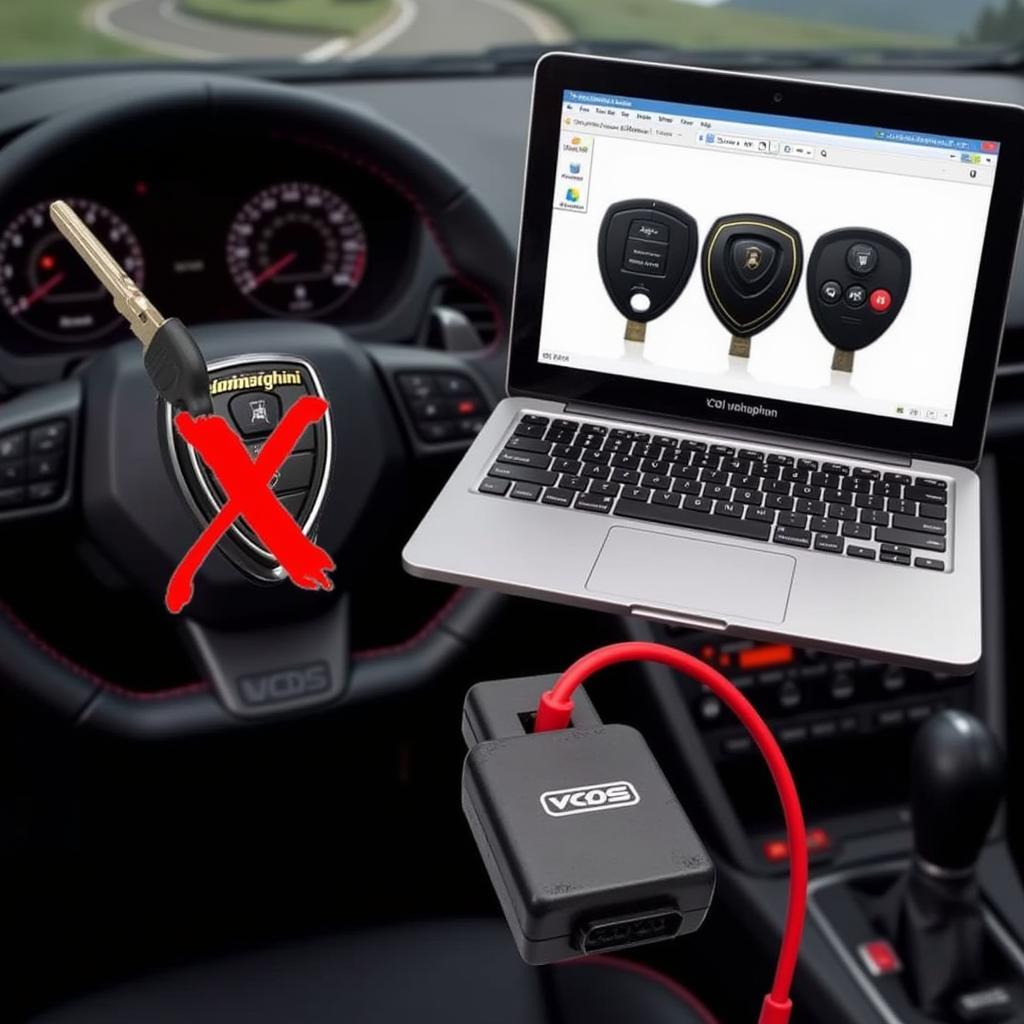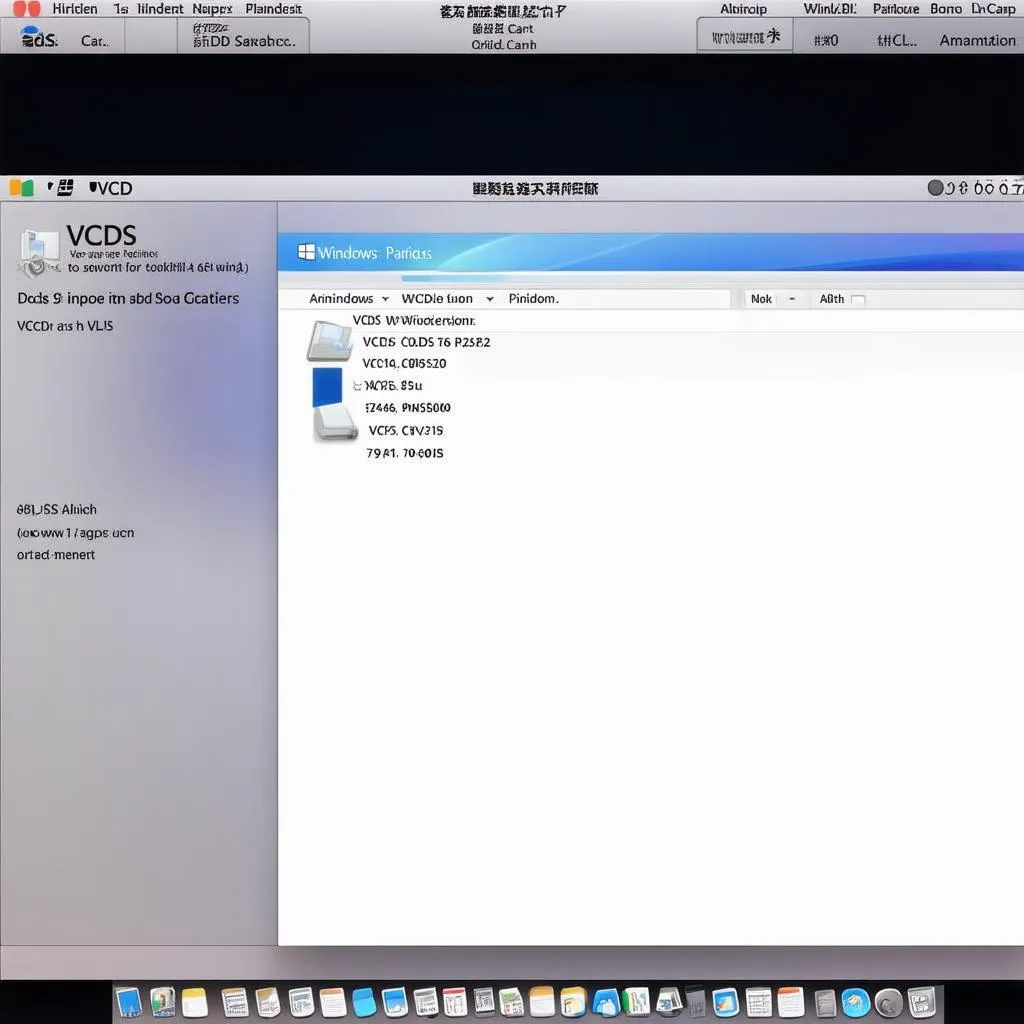Turning off handbrake settings in VCDS can be a useful procedure for various diagnostic and repair tasks. This article will guide you through the process, explaining the intricacies and potential pitfalls involved in modifying your vehicle’s handbrake system using VCDS.
If you’re working on your car’s braking system, having access to the right diagnostic tools can make all the difference. For Volkswagen, Audi, Seat, and Skoda vehicles, VCDS (Vag-Com Diagnostic System) is a powerful tool for accessing and modifying various control modules, including the one responsible for the handbrake. You may find yourself needing to turn off the handbrake settings in VCDS for several reasons, such as performing a brake bleed, diagnosing a faulty handbrake switch, or troubleshooting electronic parking brake issues. This requires careful execution and a thorough understanding of the system to avoid unintended consequences. Similar to vcds mk4, using VCDS requires some basic knowledge of the software and your vehicle’s systems.
Understanding the Handbrake System and VCDS
Before diving into the process, it’s crucial to understand the components involved. The handbrake, also known as the parking brake or emergency brake, is a safety-critical system designed to keep your vehicle stationary when parked. Modern vehicles often employ electronic parking brakes (EPB), which are controlled by an electronic control unit (ECU). VCDS allows you to communicate with this ECU, enabling adjustments to the handbrake settings. However, incorrect modifications can lead to malfunctions and safety hazards.
Accessing the Handbrake Module in VCDS
The first step is connecting your VCDS interface to your vehicle’s OBD-II port and launching the software. Then, select the correct control module for the handbrake system. This typically involves choosing the “Parking Brake” or “Electronic Parking Brake” module. The specific module name can vary depending on the vehicle model and year.
Navigating the Coding and Adaptation Channels
Once you’ve accessed the correct module, you’ll need to navigate to the coding or adaptation channels related to the handbrake settings. These channels contain the parameters that control the handbrake’s behavior. Consult your vehicle’s specific wiring diagrams and documentation to identify the correct channels. Remember, altering the wrong settings can lead to unexpected results.
Turning Off Specific Handbrake Settings
The process for turning off specific handbrake settings depends on the desired outcome. For example, to temporarily disable the handbrake warning light for a brake bleed, you might need to modify a specific adaptation channel. Consult your vehicle’s service manual or online forums for guidance on the correct procedures.
Disabling the Handbrake Warning Light
Disabling the handbrake warning light might be necessary during certain diagnostic procedures. However, remember to re-enable the warning light afterward to ensure proper operation of the safety systems. This is usually accomplished by reversing the changes made in the adaptation channel.
Deactivating the Hill Hold Assist
Some vehicles have a hill hold assist feature that automatically engages the handbrake on inclines. You can typically deactivate this feature through VCDS by modifying the relevant coding or adaptation channel.
It’s important to be cautious when adjusting these settings. If you’re unsure about a specific setting, consult a qualified technician or refer to your vehicle’s documentation. This is particularly relevant if you are working on a newer vehicle with vcds parking brake release functionality.
Restoring Default Handbrake Settings
After completing your diagnostic or repair work, it’s essential to restore the default handbrake settings. This ensures that the handbrake functions correctly and all safety features are enabled. Simply reverse the changes you made in the coding or adaptation channels to restore the default values.
Common Mistakes to Avoid
- Modifying the wrong channels: Always double-check the channel numbers and descriptions before making any changes.
- Forgetting to save changes: Ensure you save the changes after modifying any coding or adaptation channels.
- Not restoring default settings: Always restore the default settings after completing your work.
Just like when you are looking for information on how to turn off handbrakewarning mk4 jetta in vcds, ensuring you have accurate and detailed information is crucial for success.
Conclusion
Turning off handbrake settings in VCDS can be a valuable tool for diagnostics and repairs. However, it’s crucial to proceed with caution and understand the implications of modifying these settings. Always consult your vehicle’s documentation and follow the correct procedures to avoid any issues. By understanding the process and taking the necessary precautions, you can safely and effectively utilize VCDS to work on your vehicle’s handbrake system.
FAQ
- Is it safe to turn off handbrake settings in VCDS? Yes, but only temporarily for diagnostic or repair purposes.
- What should I do if I encounter an error while using VCDS? Consult the VCDS documentation or contact technical support.
- Can I permanently disable the handbrake warning light? No, this is not recommended as it compromises safety.
- Where can I find the correct coding and adaptation channels for my vehicle? Consult your vehicle’s service manual or online forums.
- What should I do if I accidentally modify the wrong setting? Try to restore the default settings immediately.
- Can VCDS be used on all car makes and models? No, VCDS is primarily designed for VAG (Volkswagen Audi Group) vehicles.
- What is the difference between coding and adaptation in VCDS? Coding changes the fundamental functionality of a module, while adaptation fine-tunes existing features.
Need further assistance? Contact us via Whatsapp: +1 (641) 206-8880, Email: [email protected] or visit us at 276 Reock St, City of Orange, NJ 07050, United States. Our customer service team is available 24/7.



